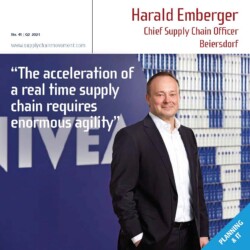The DNA of S&OP software

I often get asked ‘Which software should my company use for sales & operations planning (S&OP) and integrated business planning (IBP)?’ Les Brookes, CEO of consultancy firm Oliver Wight EAME (who came up with S&OP in the 1980s and, more recently, IBP too), fittingly summed up the difference during a recent supply chain conference in Munich: “S&OP is a supply chain process. IBP is about how the company is run”. S&OP revolves around aligning supply and demand. IBP also takes account of the annual budget and the gap that often opens up over the course of the year.
Various software suites are available to support the S&OP process. Gartner has placed the best-known vendors in its familiar ‘Magic Quadrant’. The problem is that this matrix was never intended to be used for software selection, but rather as a way of comparing the performance of the software vendors. Furthermore, the suitability of the software is highly dependent on the maturity of the S&OP process.
In conjunction with a Chinese supply chain student, I’ve investigated how companies select S&OP software and what they look for. The deciding factors are the software vendor’s size, reputation and references as well as the user-friendliness and functionality of the software. One supply chain director commented that the existing overviews fail to include the software vendors’ corporate strategies and the industry segments they operate in. Plus, there are often multiple supply chains within companies.
To position the various S&OP software suites based on industry references, we used the hopefully well-known matrix by Professor Hau Lee from Stanford University featuring Efficient, Responsive, Risk-hedging and Agile supply chain types. Besides that, I designed my own matrix for the software, with the openness of the S&OP software along the vertical axis and the focus on the process and/or the optimization along the horizontal axis. Ultimately I see four different types of S&OP software: the internally politically motivated type, the optimizing black box type, the intuitive type and the future-modelling type. Just as with DNA research, this is all still in its infancy and to publish it would be too premature – but if you’re looking for S&OP software, you should contact me!
Martijn Lofvers, publishing director & chief editor martijn.lofvers@supplychainmedia.nl









